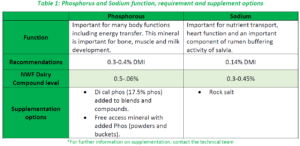Are your cows acting abnormally? Eating stones, mattresses, astroturf? Have they been licking soil? They could be experiencing Pica. While animals may look healthy, this behaviour may lead to some undesirable consequences; ingestion of object which could damage the gut.
What is Pica?
Pica is an abnormal behaviour seen in cattle which involves licking and chewing inedible objects and materials, such as stones, turf, and soil. The exact cause is not known, though it is thought that something needs balancing and this behaviour indicates that the animal is trying to redress some sort of balance. Current thoughts and contributing factors are as follows:
Dry matter intakes
• Are cows eating enough? We know the importance of dry matter intake and with the weather not being favourable to grass growth, DMI must be carefully monitored to make sure cows have access to their dry matter allocation.
• Energy, protein, and minerals, in addition to the potential to change rumen balance will be affected by any reduction in grass intake. If cows are limited, eating less than what is assumes, there is increased risk of Pica, not to forget the impacts on yields and BCs.
• REMEMBER Water. Check availability regularly as this has an impact on DMI.
Rumen Health
• A contributing factor to pica is the risk of acidosis and the lack of structural fibre in the diet. The NDF of grass increases throughout the season (linked to grass maturity) which reduces the risk of pica as the season progresses.
• Cows which have been turned onto silage aftermath which tends to be higher in acid load, lower in NDF and fibre index (and allocation may be tight), are also risk factors for pica.
Copying and boredom
• Pica behaviour can be learned and quickly adapted into a daily routine which is more common in younger animals established from boredom.
• Offer enrichment such as balls or large items to play within groups and housing can be beneficial.
Mineral balance
When cattle are showing this behaviour, minerals tend to be the first thing to be confronted and checking supply vs requirement is important. Sodium, phosphorous and cobalt are the key elements linked with pica. Table 1 highlights the function, requirement and supply options for phosphorus and sodium.
• Checking that requirements are met through supplementation in the form of rock salt alongside a well-balanced mineral can often relieve signs and encourage intakes of water and dry matter.
• From research, a link between antioxidant status and pica has been highlighted. Therefore, managing heat stress and ensuring adequate supplies of copper, selenium and vitamin E is also important.

Sodium
• Potassium locks up sodium (and Mg).
• Grass in early summer can have lower sodium levels, indicating that sodium should be higher up on our list.
• Cows self-regulate sodium and will generally consume it if they need it so providing rock salt proves beneficial.
Phosphorus
• At this time of year (spring/summer) phosphorus tends to be low in grass on some farms.
• Supplementation is required daily.
• Usually takes 10-14 days before you see a response to supplementation (in the blood).
• Aluminium competes with phosphorous absorption, a risk considering the flooding at the beginning of the year.
The exact causes and details of Pica are yet to be defined and all avenues should be investigated when faced with a behavioural problem. However, the first place to start is to check intakes and remember that a drop in DMI will impact background mineral levels which a cow is receiving.
For advice and help on dealing with Pica or behaviours, speak to our technical team on 0800 756 2787.

